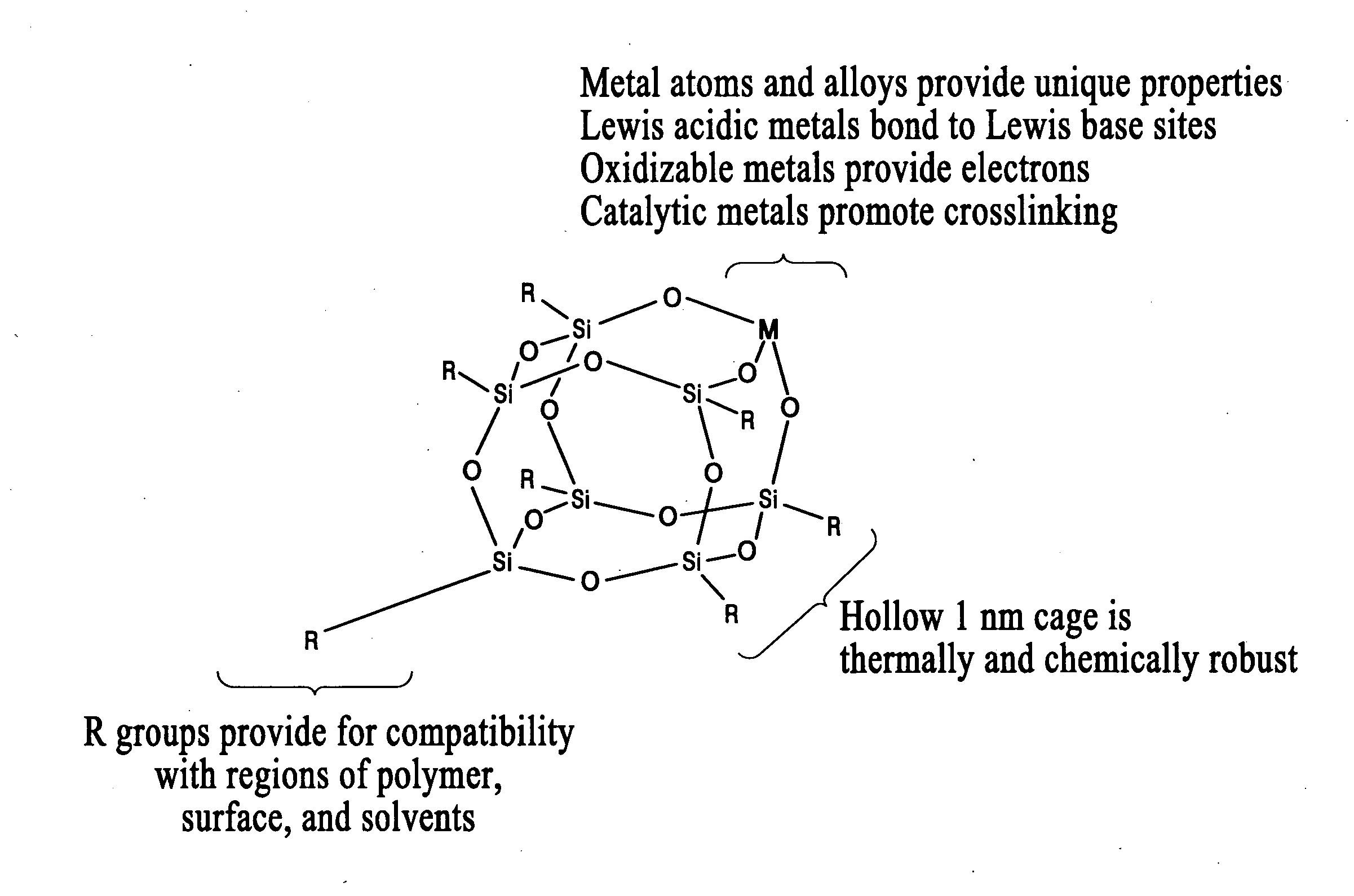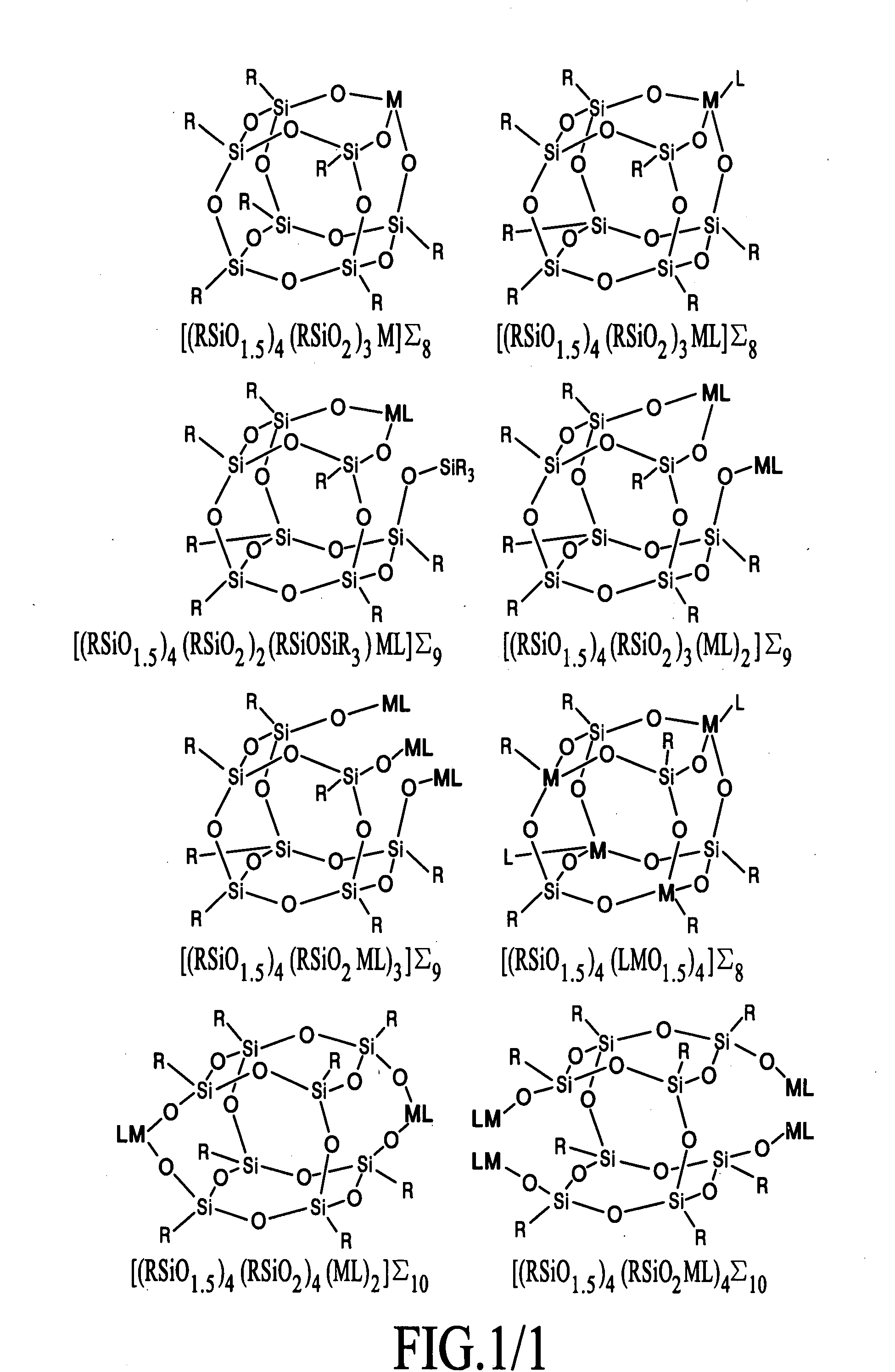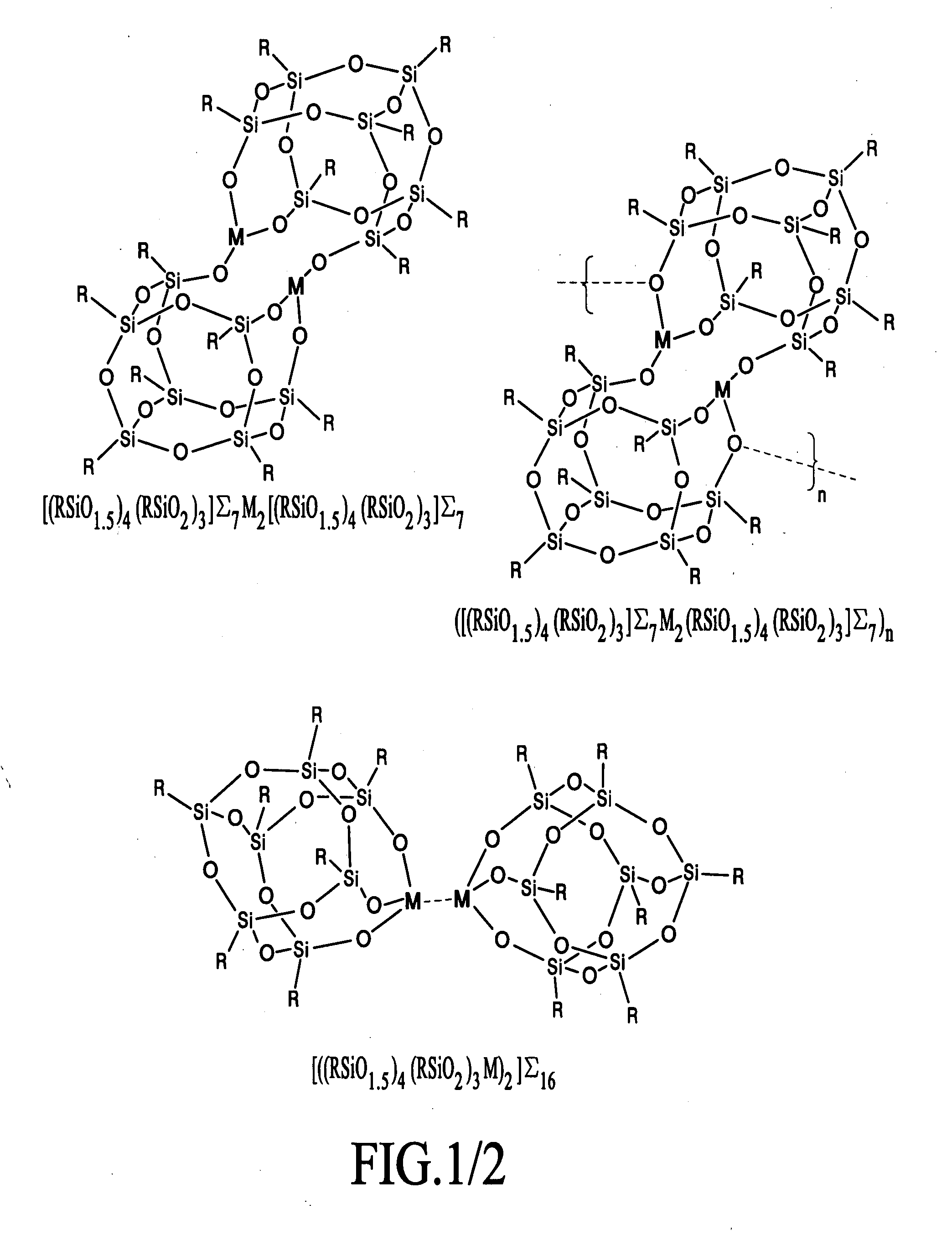Metallized nanostructured chemicals as cure promoters
a nano-structured chemical and promoter technology, applied in the direction of liquid/solution decomposition chemical coating, metallic material coating process, coating, etc., can solve the problems of insufficient control of polymer chain, coil and segmental motion, optical and electronic properties at a molecular level, prior art associated with fillers, plasticizers, catalysts,
- Summary
- Abstract
- Description
- Claims
- Application Information
AI Technical Summary
Benefits of technology
Problems solved by technology
Method used
Image
Examples
example 1
Thermal Stability of POMS Catalysts
[0033]The thermal stability of POMS was examined to determine if it could maintain its ability to catalytically promote polymer cure while not undergoing decomposition. The POMS were found to be unaffected by low temperatures and exhibited thermal stabilities up to 250° C. (480° F.) and 550° C. (1022° F.) (FIG. 3).
example 2
Ultraviolet and Vacuum Ultraviolet Stability of POMS
[0034]POMS cages are additionally beneficial in polymers because of their radiation absorbing characteristics (FIG. 4). The absorption wavelength is tunable over a wide range and highly dependant upon the nature of the R group on the cage and type of metal atom. The absorptive range coupled with the high thermal stability exceeds the performance of wholly organic absorbers and provides a new opportunity for protection of high temperature polymers, composites, and coatings from UV damage.
example 3
Cure of Urethane Resins
[0035]A large diversity in structures and compositions for POMS exists (FIG. 1). Many of these systems are capable of functioning as catalysts and cure promoters in different resin systems. Preferred compositions for polyurethanes are [(RSiO1.5)7(HOTiO1.5)]Σ8, [(RSiO1.5)7(i-propylOTiO1.5)]Σ8, and [(RSiO1.5)7(Me3SiO)(i-propylO)2TiO0.5)]Σ8 as shown in FIG. 5. The activity of POMS to polyurethane cure is possible over a range of POMS loading from 0.001% to 50 wt % with a preferred loading of 0.1% to 10%.
[0036]Cure of a Bayer 2-component polyurethane containing desmophen polyol 1150 (100 mass parts) and desmodur polyisocyanate N 75 MPA / X (70 mass parts), was carried out by mixing for one minute followed by subsequent addition of the POMS and mixing for 2 minutes followed by curing at the specified temperature. The polyurethanes were suitable for use as coatings on glass or as monolithic materials. While all catalysts promoted cure within 24-72 hours, the [(RSiO1.5...
PUM
| Property | Measurement | Unit |
|---|---|---|
| size | aaaaa | aaaaa |
| density | aaaaa | aaaaa |
| molecular diameters | aaaaa | aaaaa |
Abstract
Description
Claims
Application Information
 Login to View More
Login to View More - R&D
- Intellectual Property
- Life Sciences
- Materials
- Tech Scout
- Unparalleled Data Quality
- Higher Quality Content
- 60% Fewer Hallucinations
Browse by: Latest US Patents, China's latest patents, Technical Efficacy Thesaurus, Application Domain, Technology Topic, Popular Technical Reports.
© 2025 PatSnap. All rights reserved.Legal|Privacy policy|Modern Slavery Act Transparency Statement|Sitemap|About US| Contact US: help@patsnap.com



